From talent to transformation: 16 design takeaways from Pune Design Festival 2019
In our wrap-up article on PDF 2019, we provide a broad overview of design metaphors, partnerships, education, and emerging trends.
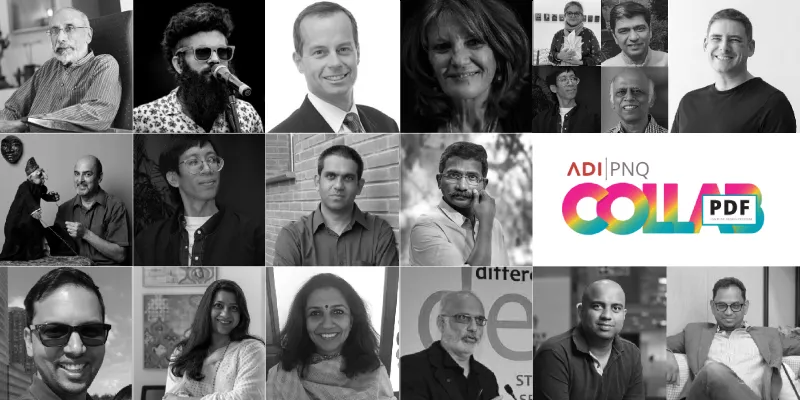
Organised by the Association of Designers of India (ADI), the 13th annual Pune Design Festival (PDF) provided a number of inspiring and actionable takeaways for design professionals and communities beyond. Previous themes of PDF were Re.gen.e.rate (2012), Unlimited (2014), Design X (2016), trans.form (2017), and Designism (2018).
This year’s theme was COLLAB, derived from the word ‘collaborative.’ The stimulating two-day event was packed with insights, debates, workshops, movie screenings, exhibitions, networking breaks, and evening musical performances.
For designers and the broader creative community, here are my top 16 takeaways from PDF 2019, on design metaphors, practice, partnerships, purpose, traditions, education, and emerging trends.
See also YourStory’s coverage of the design conferences Singapore Design Week, Design4India, Bengaluru ByDesign, DesignUp, UX India, Design4Success, Design Talks, and BeFantastic. Check out our d-Zen (‘design Zen’) section for in-depth book reviews, interviews, and expert pieces as well.
1. Design language: descriptors and metaphors
A number of creative metaphors were offered for collaborative design, such as trapeze (team PDF) and jugalbandi (Pavitra Rajaram). But unfortunately, there doesn’t seem to be a word for design in Indian languages, according to Ashoke Chatterjee, former director of NID.
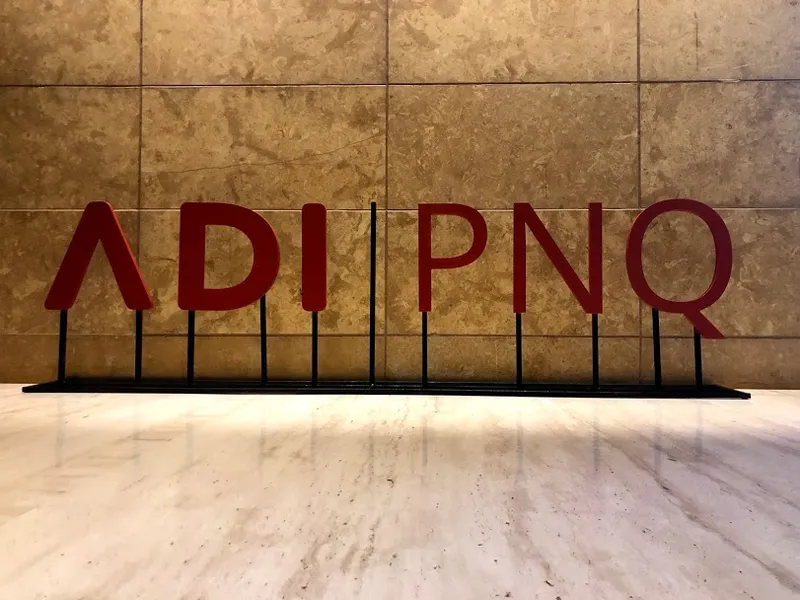
“Design is the ability to see the world through other people’s eyes,” he said. But without a values-based foundation, the profession in India will “climb up the stairs backwards”, he cautioned.
Kedar Nimkar, Design Head at BookMyShow and Founder of Audiogyan, has documented design attributes from a range of experts, such as sensitivity, patience, perseverance, empathy and rebelliousness. Creativity thrives under conditions of freedom as well as constraints, and design is a combination of push and pull factors.
“Design is a network builder, driver of collaborative creativity, and voice of the company to the customer,” said Kevin Gilboe, Head of Design, Asia-Pacific, 3M. Designers can also act as ‘internal intrapreneurs’ in their organisations. “Design is a leadership function,” he added.
2. Accept criticism and even rudeness
Collaboration in creative projects calls for free-ranging opinions, positions and debate. Musician Vasu Dixit shared a number of collaborative video projects, including one with Shubha Mudgal where the musicians emphasised that rudeness has a place right alongside politeness in effective collaboration.
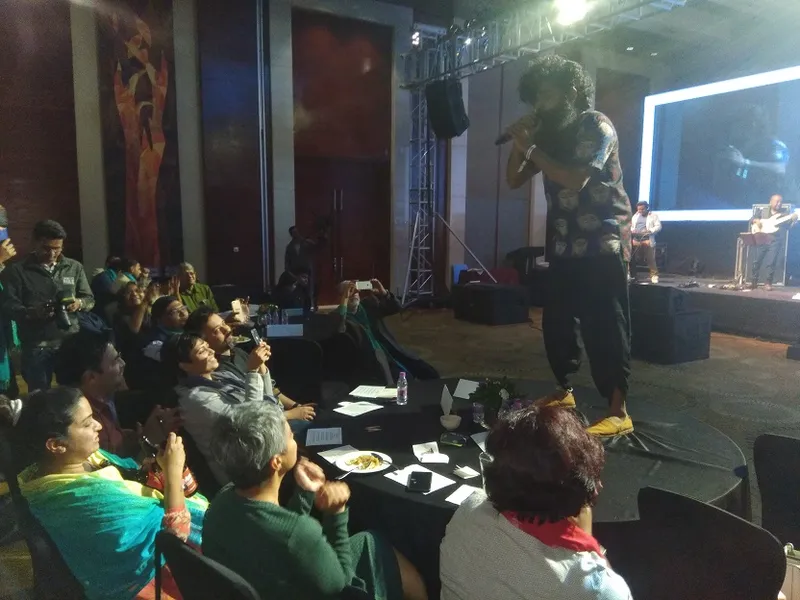
Friction, disagreement and arguments lead to good ideas, and should not be discouraged. Pankaj Jhunja, Head of Mobility Services at Tata Motors, joked that French people may seem worse than Indians when having arguments – but they only take it professionally, unlike Indians who take criticism personally.
3. Designers as innovation partners
Design helps generate insights that power opportunities for innovation, according to Michael Foley, Founder of Foley Designs. Design firms can be piloting vehicles for innovation, he said, showing examples of his designs for cooling devices in helmets, developed by a Pune startup.
Designers can create experiential touchpoints, and enable arms-reach innovation. Design helps products become intuitive, with short learning curves and easy adoption, he added. It can also help innovations have an impact that is instant, long-term, and scalable.
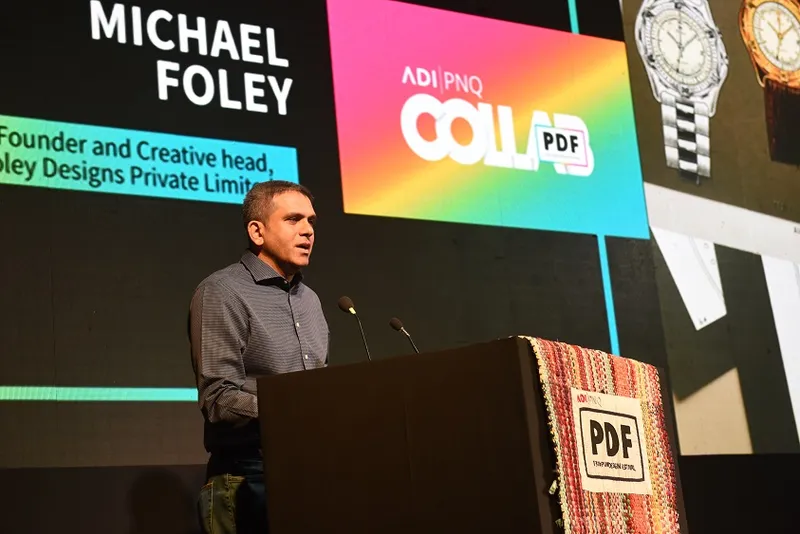
4. Design inspired by nature
“Humans create experiences. Nature is experience,” said Maggie MacNab, author of the books Design by Nature and Decoding Design, and the video Designing Effective Logos. She has also served as President of the Communication Artists of New Mexico.
Maggie explored the relationships between nature, art, mathematics and design, such as the Fibonacci series in sunflower floret patterns. Patterns store, distribute and connect energy in interesting ways, she explained. Everyday patterns of curves and lines can connect with brand and logo designs in diverse ways. For example, angles reflect stability and are used in logos of banks.
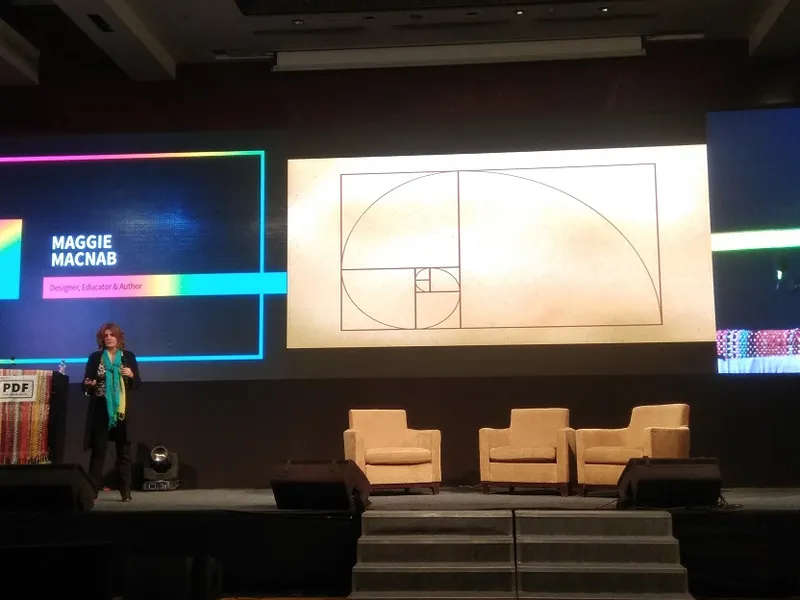
5. Traditions and contradictions in India
The expression of modernity in India is different from the Western model of organised and clean cities, joked Santosh Desai, CEO of Future Brands, and author of the Times of India column City City Bang Bang. His book, Mother Pious Lady - Making Sense of Everyday India examines the daily life of middle-class India.
India is a bundle of design contradictions, with cities like Bengaluru being both a global hi-tech hub as well as a messy jumble of traffic and pollution, Santosh observed. “We are blind to many absurdities,” he said, regaling the audience with photographs of couples using umbrellas to create semi-private zones in parks, and ads on rickshaws.
Management is a pseudo-discipline with limited ecological understanding, Santosh said. He urged designers to handle MBAs on their team as if they were a “design problem”.
6. Conceptual design
New frontiers were presented from seemingly traditional fields such as puppetry and book publishing. Dadi Pudumjee, Founder of the Ishara Puppet Theatre Trust and President of UNIMA (International Union of Puppeteers), showed how puppets can reflect traditional folklore while also being re-designed for contemporary settings and themes. New designs have even included internal lights and international collaboration.
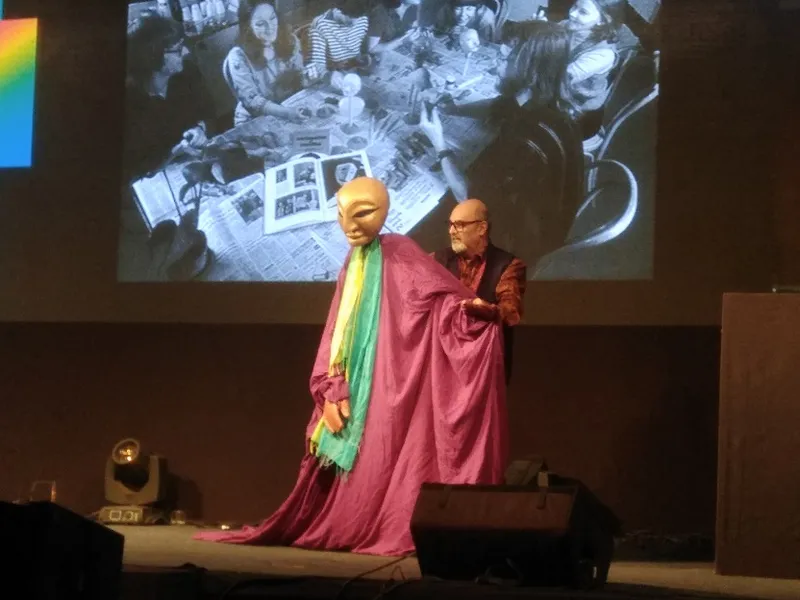
Photographer, author and artist Dayanita Singh showed how photographs can actually be raw material for other works of art such as foldable “book objects”, mobile museums, and catalogues. She showed how her photographs can be curated, sequenced, and displayed in a wide range of settings, but giving her full control of the final display. With creative collaborators, she has ventured into new poetic and narrative domains, as seen in her books such as Myself, Mona Ahmed.
7. Digital frontiers
Art forms like photography have easily gone digital, observed Dayanita Singh. “Photography takes you where there are no words or languages,” she explained. There is so much photography now in the online world that it forces photographers to do even more to stand out, she added. “Photography starts now,” she evocatively said.
Parveez Nasyam, CEO of Xenium Digital, shared examples of experiential marketing using AR for clients like Grohe. Immersive media can help brands communicate more effectively with the user.
The rise of streaming media is transforming the music, TV and movie industry. Audiences are also being roped in as collaborators in experimental and interactive movies, though purists may claim that this distorts the integrity of the story.
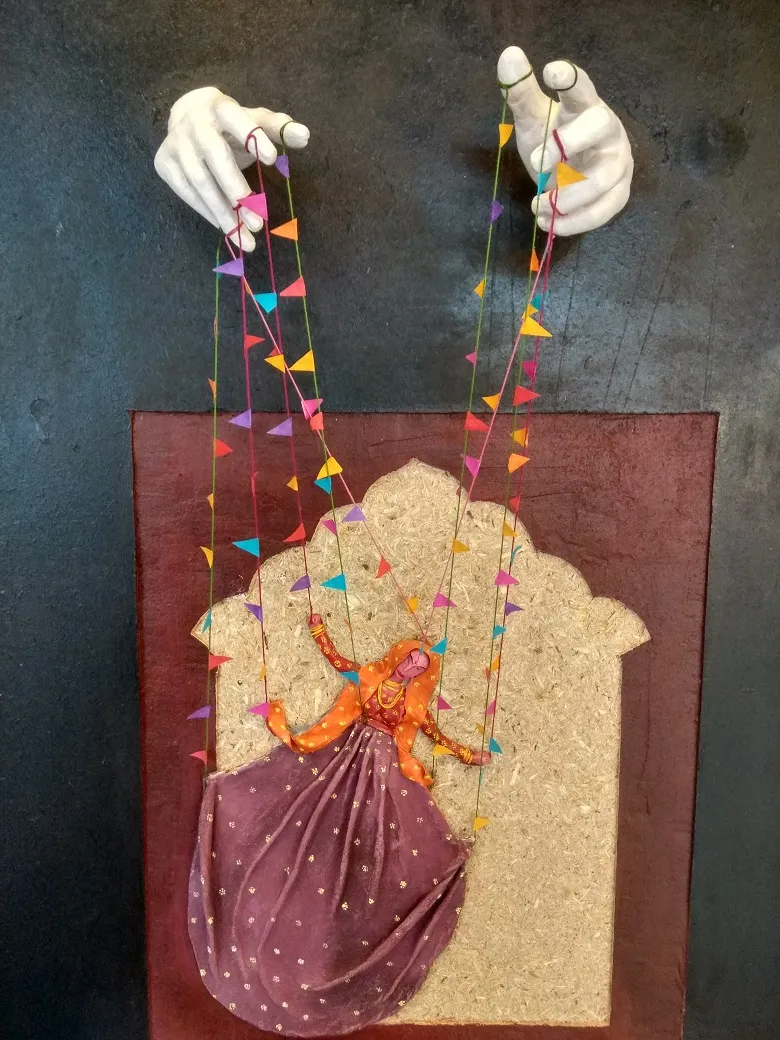
While digital media open up new opportunities for personal productivity and global connections, they also throw up a host of challenges for designers with respect to IP, privacy, security, safety, addiction, and fake news.
8. Become a ‘designpreneur’
Panellists from Tie Pune, Globant, The Label Life, and Moonshine Meadery shared insights on the startup opportunity for designers, and the scope for collaboration between designers and entrepreneurs (see panel coverage here). No field is off-limits for an entrepreneur, and designers can become trend-setters rather than trend-followers.
The failure rate of startups and creative projects like Bollywood movies is estimated at over 80 percent. Entrepreneurship calls for resilience and being able to withstand challenges and bounce back from failure. Moonshine Meadery almost shut down five times during its journey but has survived. The founders are committed to seeing the brand thrive in the long run, even if they may not own it.

9. Connect to a higher purpose
Designers have made notable contributions to livelihood, endangered crafts, and environmental sustainability, such as Commitment to Kashmir (Shruti Jagota Mittal), Bambu Studio (A.G. Rao), Good Earth (Pavitra Rajaram), Anandwan Smart Village (Gautam Karajgi) and PMNCH (Anthony Lopez).
Service, dignity, and love should be the watchwords for designs today, urged Ashoke Chatterjee, former Director of the National Institute of Design (Ahmedabad), and Advisor, Centre for Heritage Management. Empowerment, inclusion, and transformation can become a higher purpose for designers (see earlier article here).
10. Policies and education
“Recognition at the policy level that design is a game-changer remains the biggest hurdle. Though we have a National Design Policy and India Design Council, the field receives scant attention. Make in India will not succeed unless we prefix it with design,” cautioned ADI President Ashish Deshpande.
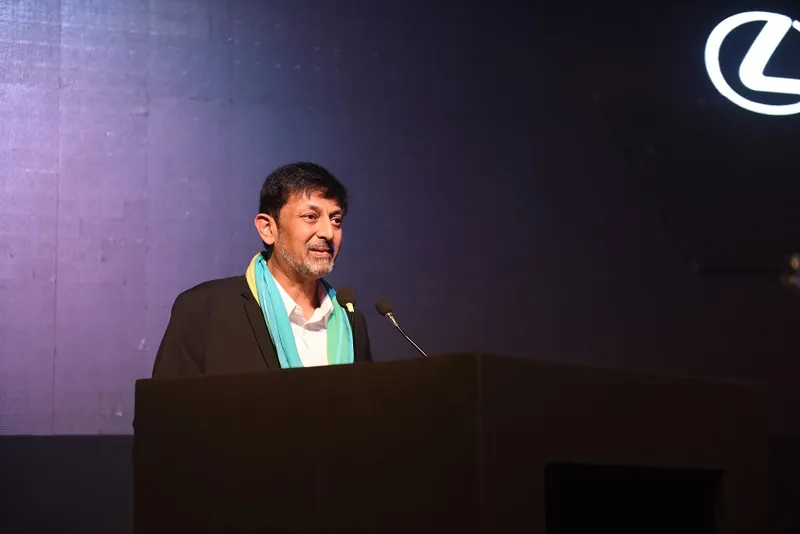
“Design education needs to be made robust and relevant. With a burgeoning education scenario unfolding, it becomes important to have a good faculty development program and focus on its quality,” Ashish added.
He recommended that the India Design Council release the Design Education Quality Mark framework. “Good quality in design education is essential to develop a strong and innovative platform of professionals serving the industry,” he advised. There should also be a promotion of skills and programmes to the masses.
Debates during the discussion sessions at the conference focused on the ‘messiness’ of needing government support for design but without politicisation and bureaucracy, the need for permanent faculty in design schools but not without a commitment to innovation, and having ‘world class’ design education but without being a copy of Western models.
11. The dark side: censorship
Design also plays a large role in the movie industry. However, Bollywood screenwriter Anjum Rajabali (Ghulam, The Legend of Bhagat Singh, Raajneeti), cautioned that the issue of creative freedom has opened up fissures in society, with prejudices and hate being drummed up for political reasons.
Extra-constitutional moral police are being unleashed on artists, and self-censorship is spreading. “There is a wave of anxiety and nervousness,” lamented Anjum, who is also a senior activist of the Screenwriters Association.
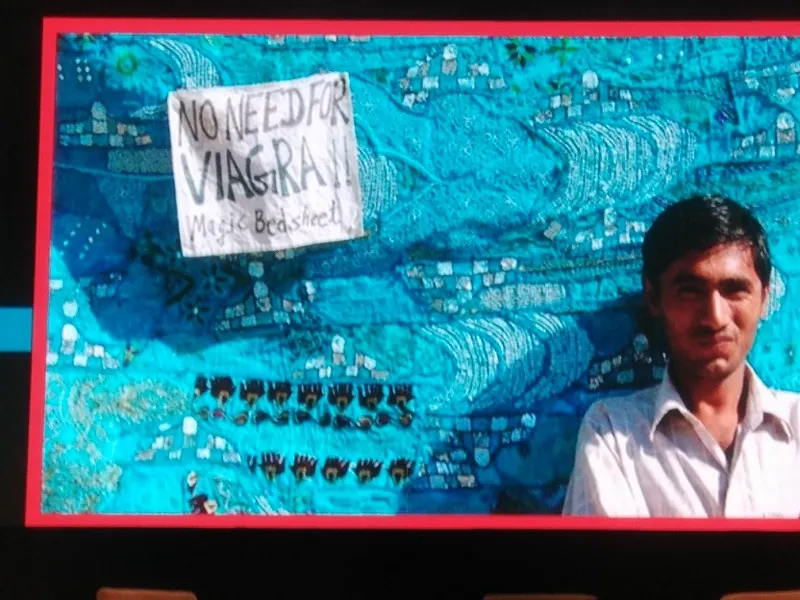
12. Collaboration: industry and international
A number of speakers called for design collaborations between companies, industries and countries. Urban designer William Harald-Wong from Malaysia founded the Design Alliance Asia (tDA Asia) in 2000, a collaborative network represented in 14 Asian countries. “Asia is where the future of design will be,” he said.
ADI has a number of collaborations with Nasscom, IIID, World Design Organisation, and India Design Council. ADI is a pan-India body, registered as a society. It has five city chapters and one student chapter. There are special events organised on the occasion of World Design Day, World Industrial Design Day, Design Mixers and Bangalore Design Week, said ADI president Ashish Deshpande.
13. Show, don’t just tell
In addition to the two-day conference, PDF featured the third annual Design Expo showcasing the work of participants from the design ecosystem: product firms, educational institutes, material vendors, and service providers. There was also an Open House option for conference attendees to visit design establishments in Pune (Elephant Design, Ka-Sha, Ticket Design, Dominix, Lemon Design, Studio Mars, Setu, Tifa, Innofy).
Such exhibitions and site visits help put a ‘face’ to design and go beyond the conceptual discussions and case study presentations of conference tracks. They are more interactive and make for better networking as well.

14. Award design excellence
It is important for professional communities to recognise and award excellence through rigorous and objective criteria. They advance the field and also serve as a chronicle of a country’s design journey. PDF 2019 featured memorial lectures, citation awards for educators, and two sets of excellence awards: Lexus Design Awards India and Battle of the Student Projects.
The Lexus awards showcase the company’s international passion for design and innovation beyond aesthetics, and recognise social impact and inclusion as well. Award categories include furniture, traditional items, lifestyle accessories, packaging, public utility, textiles, and business impact.
15. Connect to the next generation
PDF also featured mentoring sessions and a programme called Gen-D (Generation Design Programme) for students and aspiring entrepreneurs. Panels addressed issues like career options, and there were opportunities for new designers to connect with industry experts and academics.
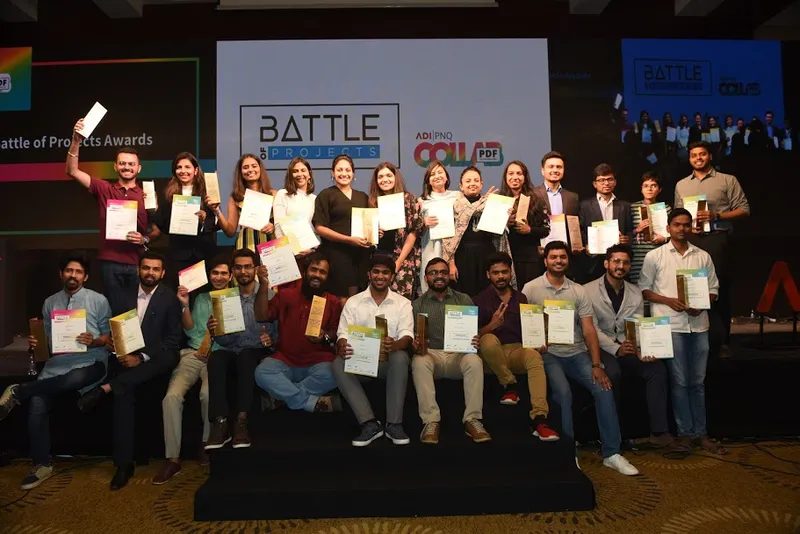
Student tickets were discounted, and students asked a number of questions in the conference track as well. There was also a competition called Battle of the Student Projects, with awards given in categories such as UI, graphic, industrial, transportation, experiential space, craft and lifestyle design.
16. Nurture design hubs
The community of Pune-based designers has helped make the city a hub for design; the first PDF was held in 2006, and now has ADI’s Pune chapter as the key driver. “We celebrate work from India as well as abroad,” said Balkrishna Mahajan, President of ADI’s Pune chapter and Founder of Ticket Design.
There are open opportunities for other cities, towns, and even villages in India to position themselves as design hubs for a range of sectors and competency areas. “We need numerous India Design Centres to pop up at metro, city, and taluka level to reach out to the people,” summed up ADI’s Ashish Deshpande. May a million designers bloom!
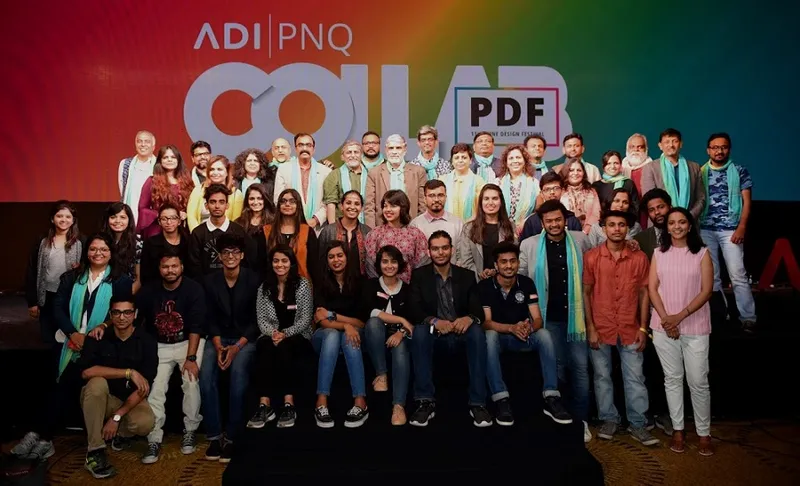





![[YS Learn] Key takeaways from Morgan Housel’s ‘The Psychology of Money’](https://images.yourstory.com/cs/2/11718bd02d6d11e9aa979329348d4c3e/Imagewf2p-1607509774638.jpg?mode=crop&crop=faces&ar=1%3A1&format=auto&w=1920&q=75)

